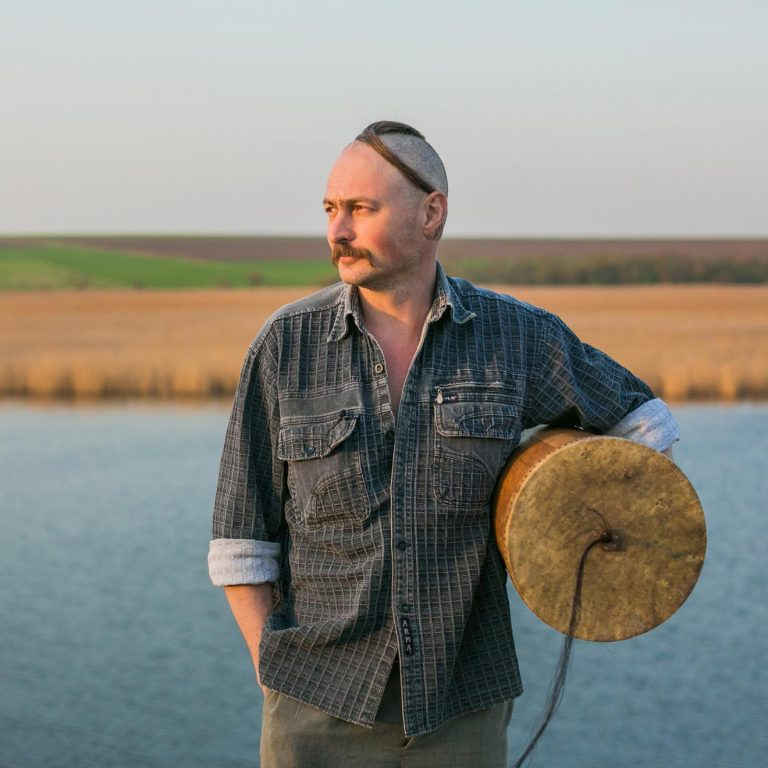There are a lot of folk musical instruments that have been forgotten over time, or their origin is hard to establish. If no one produces or restores them, they can simply disappear. Among such rare folk instruments is buhai, which was remembered in Ukraine only several years ago. The number of craftsmen who make buhais is unknown, but Andrii Lopushynskyi is among them for sure.
Andrii Lopushynskyi moved to Daryivka village ten years ago from the city of Kherson. He lived in the village together with his wife for eight years, and then they returned to the city. Now he lives both in the city and the village. Andrii’s life is closely connected with history and museum studies. The man was working in the Kherson Local History Museum for 15 years, and today he is a researcher of “Khortytsia” Reserve with its branch “Kamyana Sich” in Tavria. He works there having a dream to change the attitude of people to the museum as to the place for storing rarities only.
The first time Andrii got to know about a bird called buhai in Daryivka where these birds live on the Inhulets river:
— One day I heard strange noises as if a pump was working. It was early in the morning, at 6 a.m. approximately. I asked my wife: “Why did a farmer switch on his pump so early? It’s not a secret that everyone pumps water from the river.” She replied: “It’s not a farmer, it’s a buhai.” And I thought to myself: what is a “buhai”? She explained to me that it is a bird that lives in bulrushes. Then I googled it, and she was right: there is such a bird. After a while, I forgot about that incident.
Buhai
In Ukrainian, the word “buhai” refers to the name of the bird, known also as a great bittern, and a folk musical instrument which sound reminds of the sound of that bird.
Andrii has a well-recognized appearance: he has a scalp lock on his head and a dense moustache, so you unwittingly associate him with a Cossack. And it is not a coincidence: he has been involved in historical reconstruction for more than ten years. Together with his colleagues and friends, Andrii makes clothes and things of Cossack everyday life. And seven years ago, his acquaintance, who has a violin player friend, suggested him make a buhai.
Back then, Andrii knew just a bird with that name. His acquaintance with the same-named musical instrument started with printouts and pictures. But Andrii already had had an experience of making drums for historical clubs as well as body blanks so he managed to make his first buhai in 4 days. He was not even sure that such musical instruments exist for real. Andrii says that there are no secrets in the process:
— You look at it and see that it is made of wood, slats in particular, as well as iron and leather. So you take slats, iron, and leather, and you make an item. If you have skillful hands, you do not need any instructions. If one wants to learn how to make such an instrument, they will learn by themselves. There are no secrets in the process. Just the materials are specific. For example, it is easy to find wood – you can just buy it in the market. Finding good leather, though, is more difficult: you need to take it from an old drum or mend it by yourself.

Andrii’s friends and a piece of good luck helped him to find the necessary materials. For example, one day his friend brought him a pack of horsehair:
— I was working for two days taking our hair by hair from the mat. You need to have around 150 hairs to make a good musical instrument. Even one hair would be enough, but when it breaks, it is hard to replace it. I put a bunch of them so that a musician was not afraid to draw them accidentally. That’s how I made my buhai.
Usually, musicians can easily learn how to play this musical instrument as they feel the rhythm and can produce rhythmic sounds at once. Andrii is not sure he can play a buhai: he laughingly says that he can produce some sounds, which remind that bird, but he is not sure one can call them music:
— If you give one a flute, they won’t be able to play. The same with a harmonica or any other musical instrument. On the other hand, with buhai it is easier to produce sound. I am not a musician. I can make a buhai, but I can’t say I can play it.

A buhai
A buhai is a corded friction musical instrument. To produce the sound, one needs to use their fingers to make a friction with the membrane or a bunch of horse hairs attached in the centre (rarely plant stalks are used).
If you want to play a buhai, you pull that bunch of hairs with a water-moistened hand allowing your fingers to slide on it. The pitch of sound changes depending on where your hand stops on the bunch. The name of this musical instrument originates from the sound tone.

It is unknown when exactly this musical instrument has appeared. In the 19th century, a buhai was present as a sacral musical instrument in the culture of the Moldavians, Poles, Czechs, and Romanians. In Ukraine, it is mostly used in Zakarpattia region as an accompaniment ensemble musical instrument. “Tseberko”, “berbenytsia”, “berbenykha”, and “berbeniatko” are other names of a buhai which distinguish its different sizes and designs. Apart from folk ensembles, it is also used by koliada (Ukrainian Christmas carols) singers for musical accompaniment. You can hear a buhai at the concerts of the National Academic Orchestra of Folk Instruments of Ukraine, the National Honoured Bandura-Players Capella of Ukraine, etc.
A buhai as a musical instrument was remembered after the performance of ONUKA project at the Eurovision Contest 2017. That is when people started to try to find out what is that musical instrument, which reproduces such strange sounds, and how it works. But Andrii Lopushynskyi has got interested in their production way before that.
— Some people asked me: “How is it possible that you don’t know ONUKA? Watch her performances.” I watched it, and indeed, I saw the buhai. I think she’s got it from some concert ensemble. Taking into account that this musical instrument is used in the National Orchestra of Ukraine, there are some originals left in orchestras since they have been produced at factories.
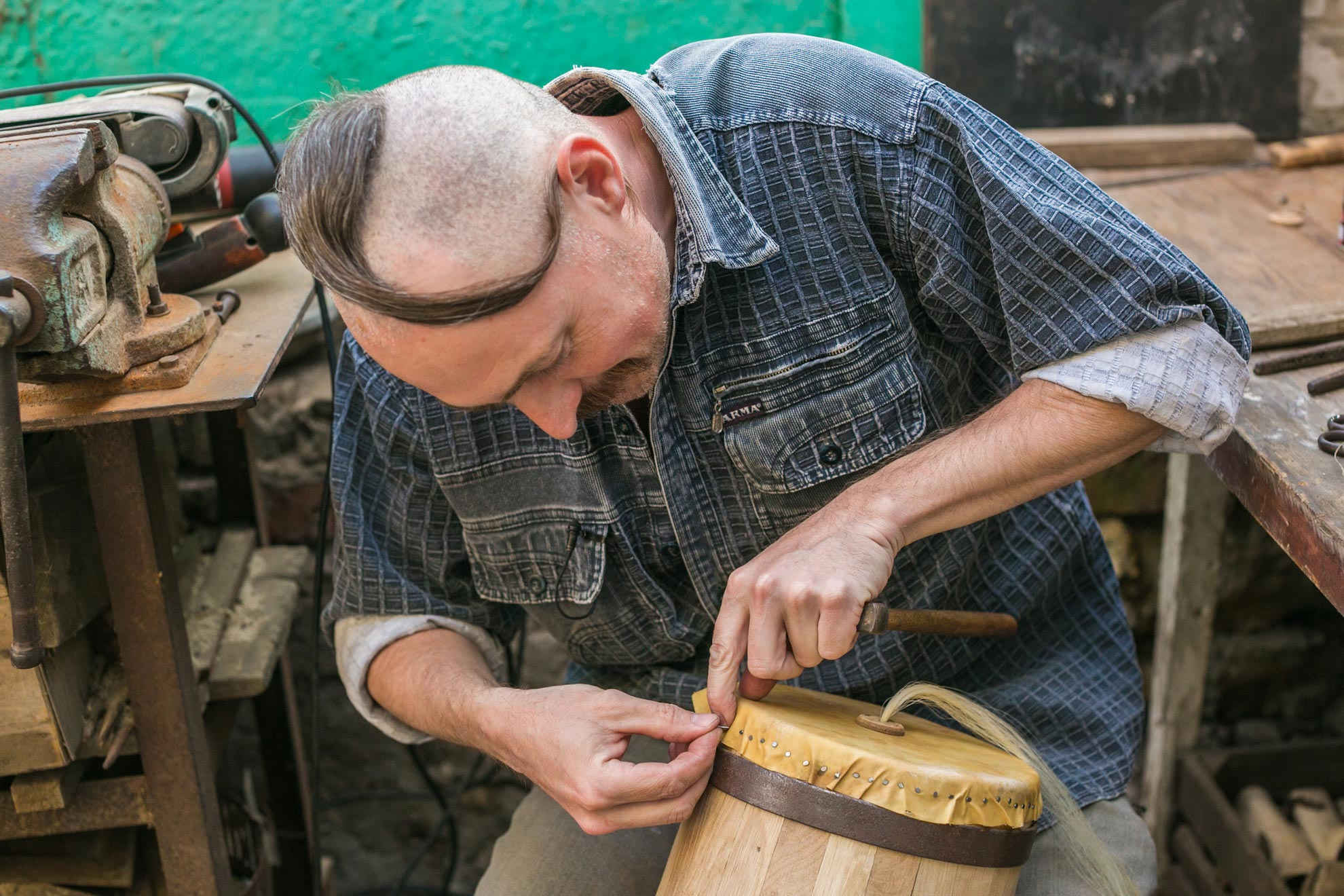
Creation process
The body of the instrument is a conical, goblet-shaped or cylindrical small barrel made of narrow deals which are fastened together by wooden or metal hoops:
— If you look at the body it is thicker here and narrower there. It is mechanically bent. That is, the steam is not used there, it is all due to the fact that the board is whittled, it remains thicker here and becomes thinner there. And when all that is drawn together, the thicker part has a larger diameter, and the smaller part has a smaller one. Well, thanks to these iron hoops, it is held together.
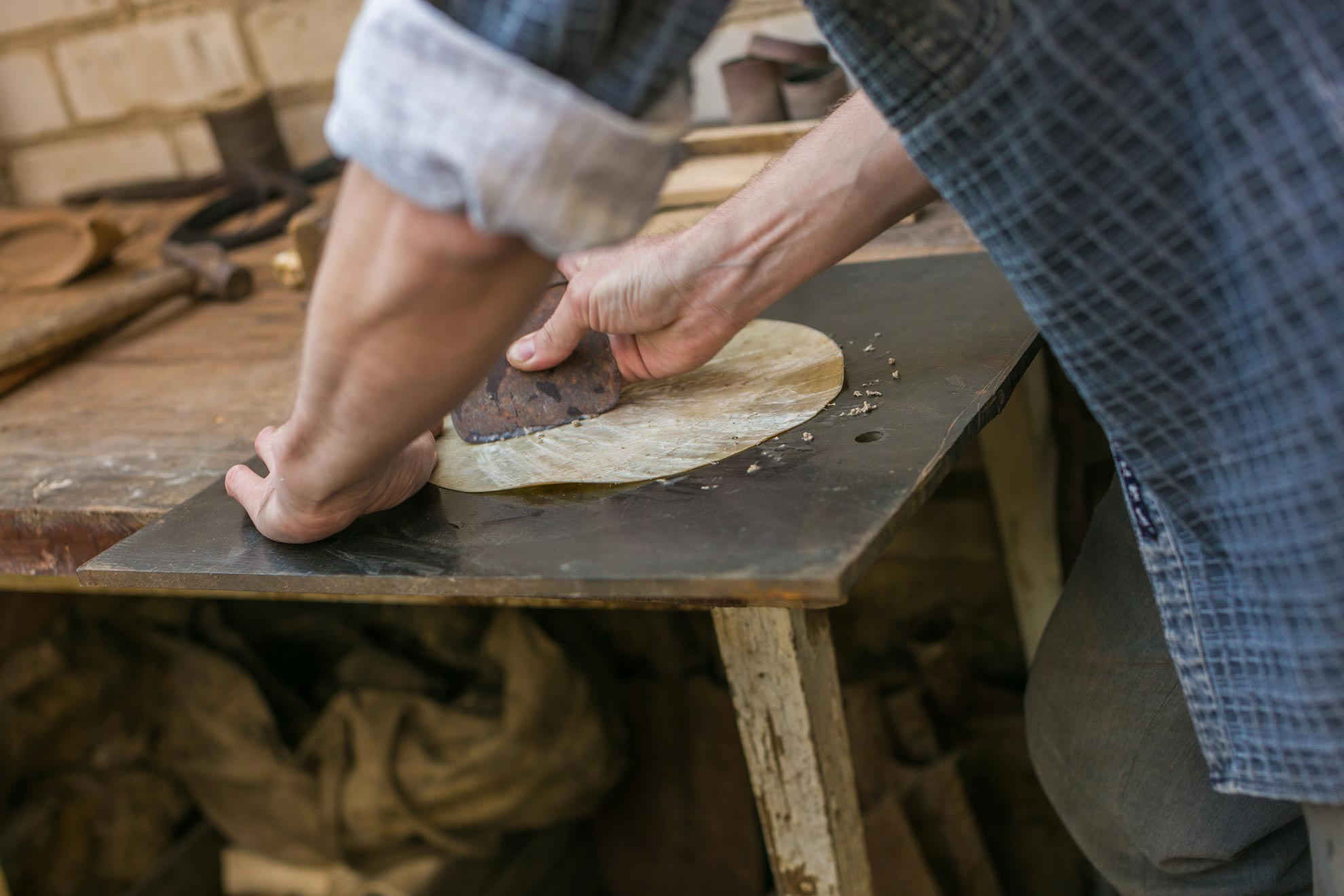
The barrel bottom may be closed with deals or maybe simply open. Historically the bodies of these instruments, according to Andrii, were made from oil barrels:
— I saw a photo where a man was riding a horse with a barrel hanging diagonally near the saddle. That is, he was delivering oil somewhere. People took ready-made barrels and pulled leather on them.

The upper hole of the instrument is covered with leather which is fixed with a special hoop or nails. That’s how a membrane is created. The goat leather is the most suitable because it is one of the thinnest. The craftsman buys it in the central market and processes it by himself. He learned this art just by reading the relevant literature. He is joking that, in general, dog’s skin is best suited:
— There is such a proverb which is usually said to a dog when it’s barking: “Shut up, or I will make a tambourine of you!” Dog’s skin is the best, it is very thin. But I will never use dogs for that. Goats are suited well.
Andrii uses dissolved lime in which he soaks processed leather for three days. Then the grease side is cleaned and dried naturally. If a hairdryer is used, the material may just crack. Processed skins can be stored for years. Before using a long-stored skin, it is again soaked in the solution for an average of a day, and then it can be used for production.
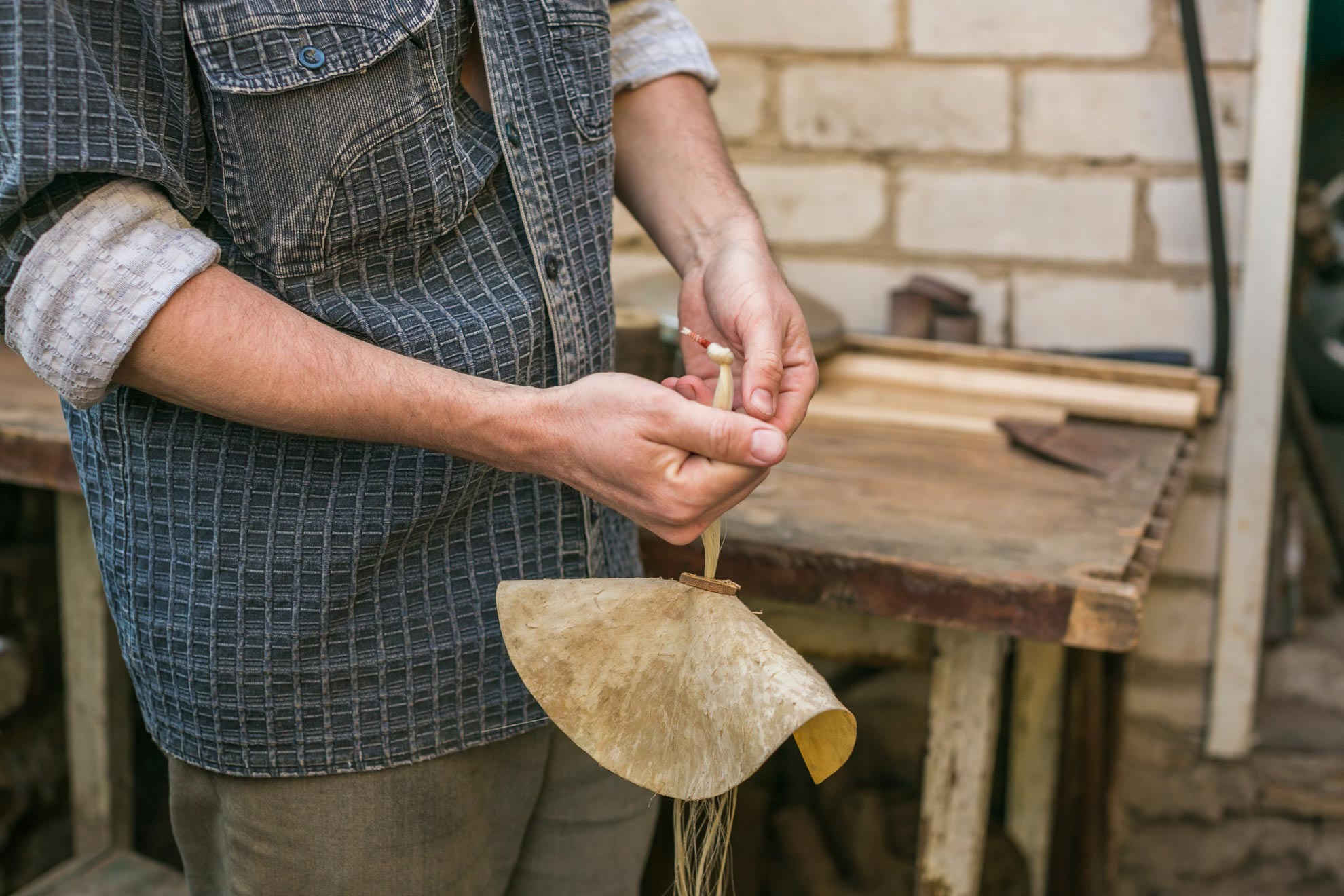
A bunch of hairs from the horsetail is attached to the midpoint of the membrane. A hole is cut through or burnt in the centre of the membrane, and its edges are strengthened by light leather or metal washers. A bunch of hairs is passed through this hole from inside, securing it with knots on both sides of the membrane. Andrii stitches leather washers with shoe threads that are used to sew a shoe top to its sole.
The tail is required to be wet as it is impossible to make a knot of a dry one. The craftsman soaks hands in water rather than kvass or beer as it was once. He says it is because the quality of kvass or beer is low nowadays. He uses the hair of Mongolian horses which is also used in a violin bow. It is important to use a male horse’s tail, not that of a female:
— It is not just my superstitions – it is better like that. It is not sexism. A male horse pisses frontwards, so his tail is dry. That is why his hair has higher quality.
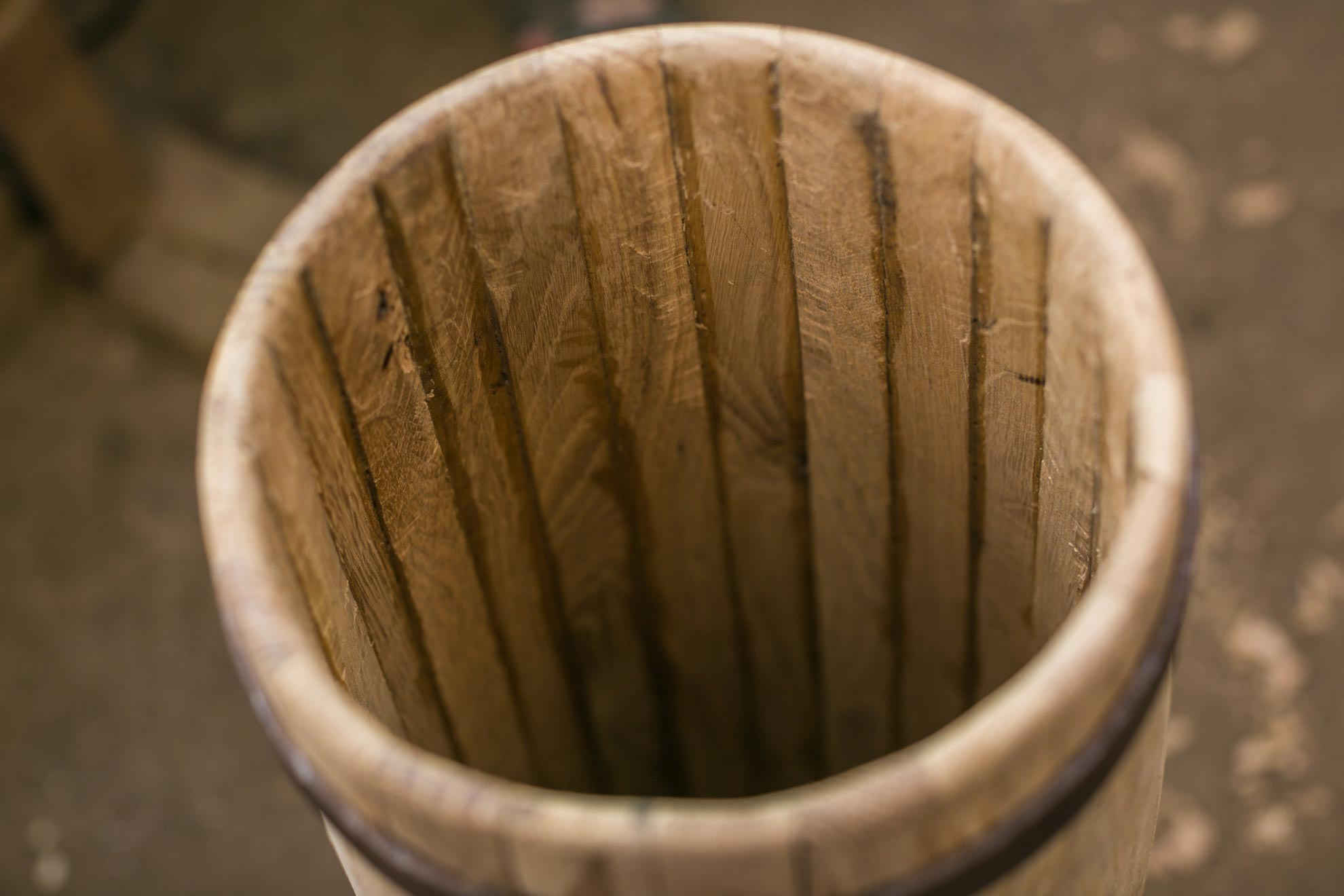
The sizes of barrels can be different. For example, a small buhai has 350-400mm body height and 180-200mm membrane diameter. The height of large instruments is 700-900mm, and the diameter is from 250mm. Body sizes don’t affect the sound – the diameter is more important. Andrii told that in early times, buhais were of two sizes – only big or small ones – because they were produced from ready-made barrels. The man dreams to create a big buhai with a diameter of up to a meter.
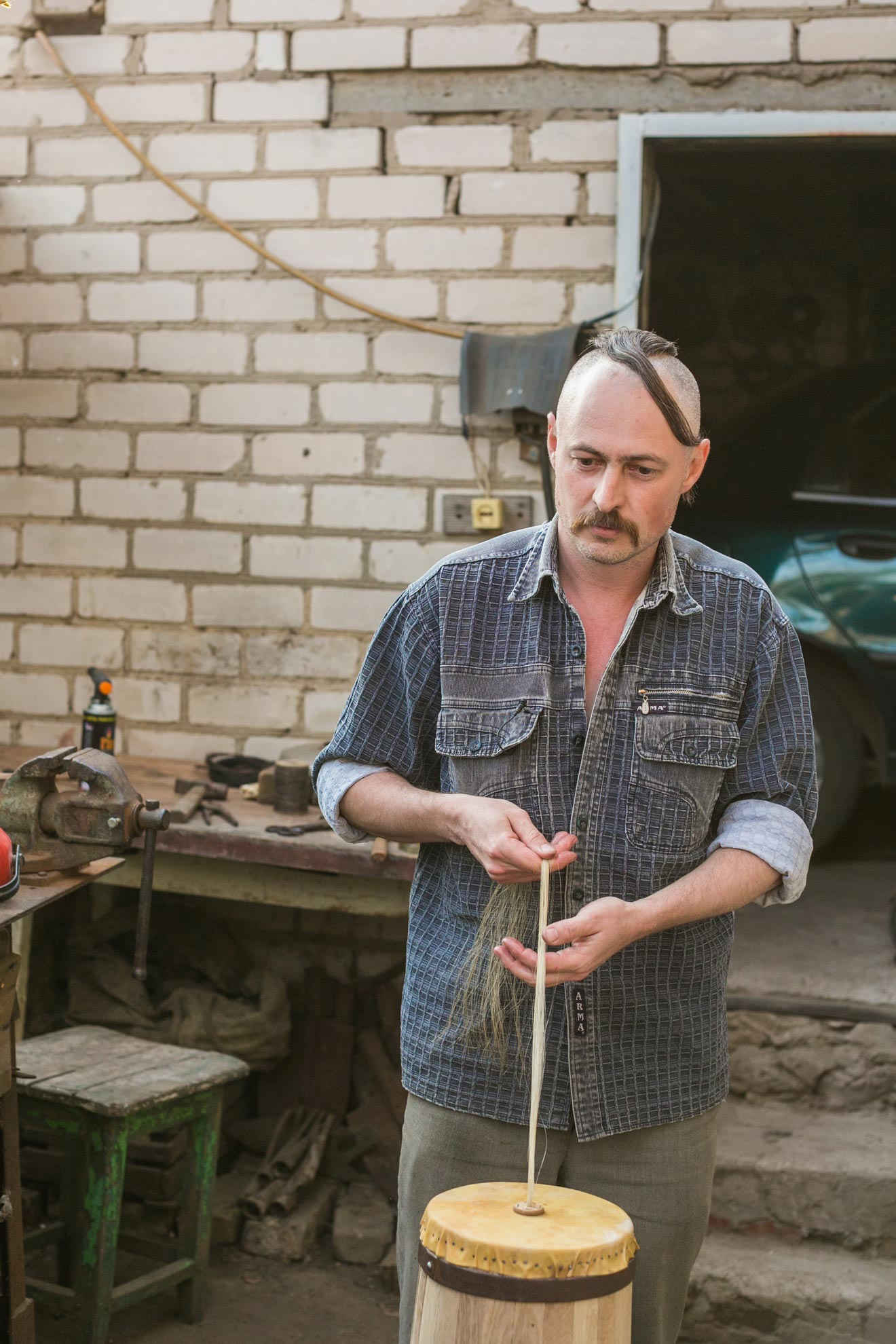
The primary sound source in a buhai is its membrane. It works as a speaker: it gives vibrations, and that is how the sound is reproduced. To make it vibrate, a tail is used, although it is also possible to use a corn stalk, but it will get dry very fast and break. Many people think that the tail makes the sound, but it is not true:
— When a hand slides on a tail, the vibration is produced. You pull the tail, but it returns to its initial position. It is like a struggle: the strength of the hand raises a membrane, and then it slides back. You don’t need to try to tear out hairs, you just need to pull. You pull up, and then the membrane returns into position. Such sliding up and down produces the sound.
Andrii told that, when he made his first buhai, he decided to test its sound in a garage. His neighbours got scared as they thought it is thunder. He made his second buhai in a summer kitchen, and the sound of the musical instrument made dogs barking. That is why Andrii performs the last production stages and sound checks in Kherson, while in the village he works mainly with leather and deals.
He told that a lot of people in Kherson and Daryivka now know how to use this musical instrument:
— Even though a buhai is officially state-recognized musical instrument, when people see it, they don’t know what it is. They think it may be some African musical instrument. A few people know how to play it. We conduct some educational events several times a year in Kherson, so its locals have already learned how to use it. Usually when someone sees it the first time, they start to bang it like a drum, and they have no idea what tail is used for.
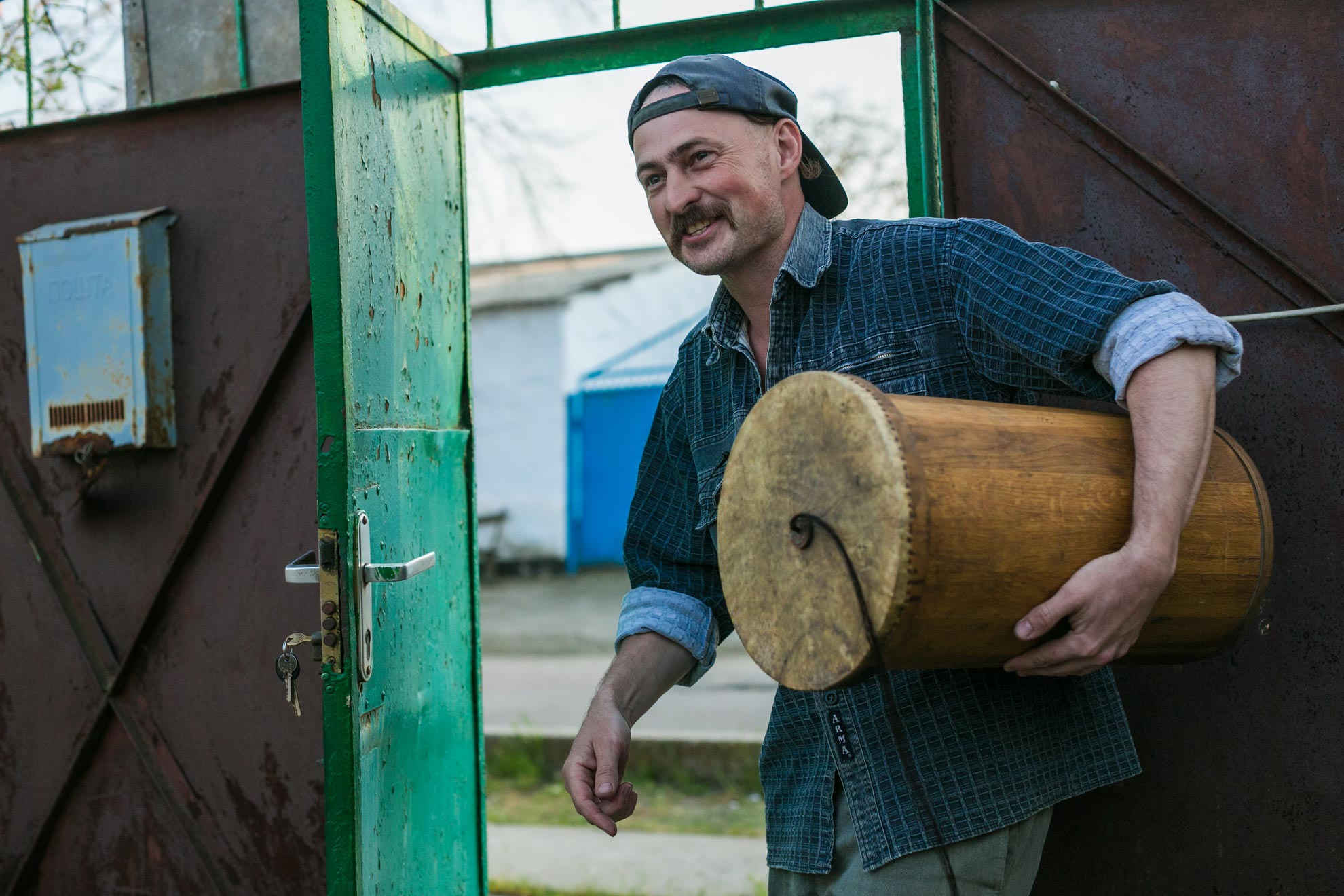
Buhai geography
Andrii makes buhais on request. He has made eleven items by now. He made his first buhai for a friend, and the second one was for a Botanics professor who decided to learn how to play the Hymn of Ukraine. The craftsman’s buhais are also popular in the theatre community. So one of the musical instruments, which he had made “for later”, took part in a theatre play:
— My friends – the musicians and theatre enthusiasts – decided to stage the play called “An Elephant”. My buhai was large, with a cylinder shape, so it reminded them of an elephant leg. They liked the sound, so they asked me to lend my musical instrument for the play. It has been for three years already that my buhai has been traveling with the performances of the play. It “works” there.
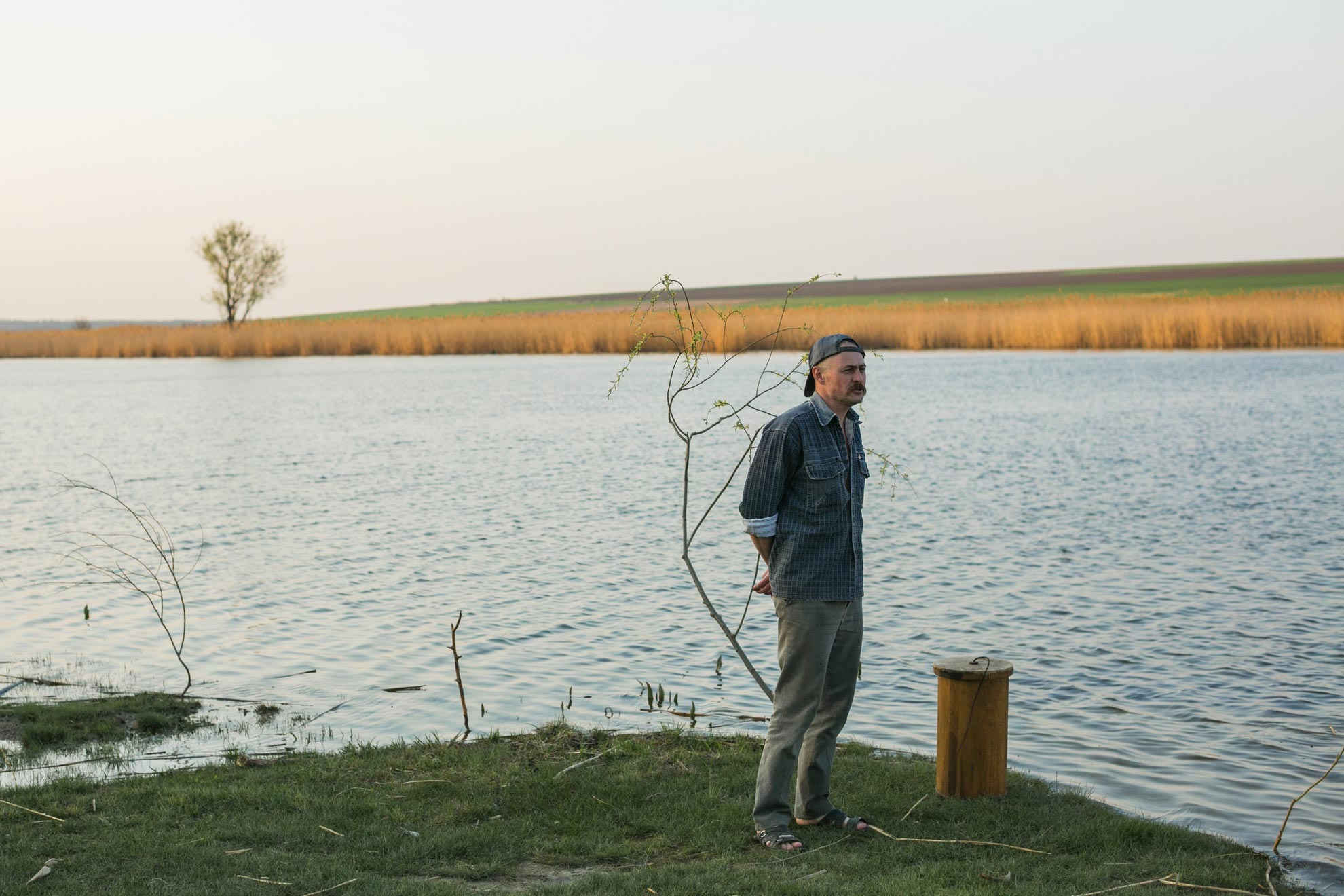
Later on, his theatre friends recommended his buhai to their theatre friends from Kyiv, and now it travels with them. There is also the Andrii’s buhai in the Kherson School of Culture which has been presented by the craftsman to them. In fact, the man made his first five instruments just for friends. The number of orders increased when a local TV channel made a story about the man who made unusual musical instruments.
— I have lost my sleep since then. People started to contact me in the Internet asking to make a buhai: I made one musical instrument for the children ensemble in Shepetivka (I don’t remember its name); another, the smallest one, traveled to the UK. The travel was long, so they asked me to make the small buhai.
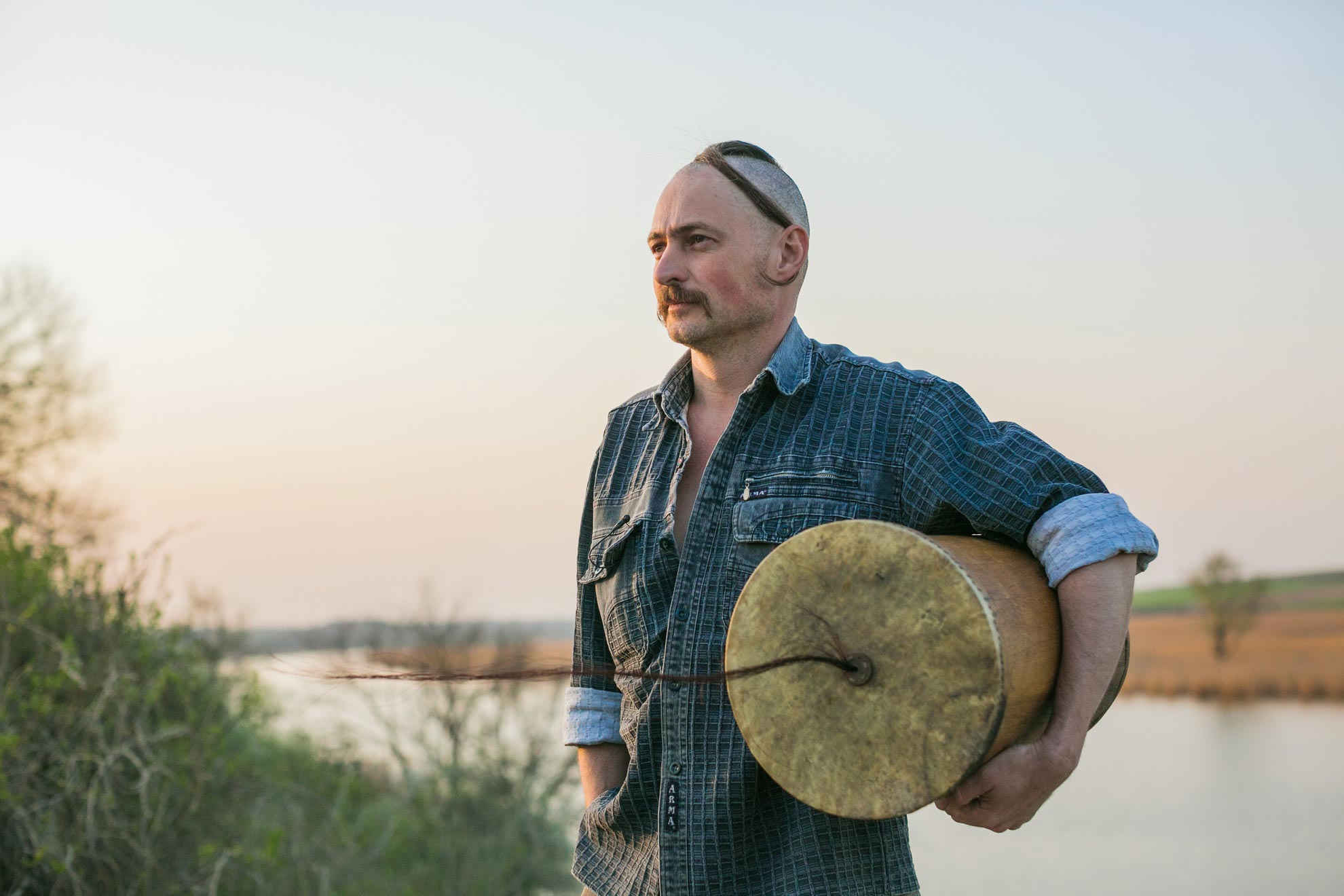
He sent one more buhai – the big one – to Canada. The craftsman tells that he always asks what the purpose of a future musical instrument will be. If it is a present, he adds some decorations. The price depends on the size of a buhai. For Andrii, this craft is not a way to earn money; it is a new and interesting activity for him:
— I did not make them for money, so when some people called me and asked me to make a small buhai to deliver it to Great Britain, I answered that the small one would cost about 200 hryvnias. The caller was laughing for a while. To be honest, I don’t want to produce them in bulk and sell, but people contact me and ask to make a musical instrument for them, so I help them.
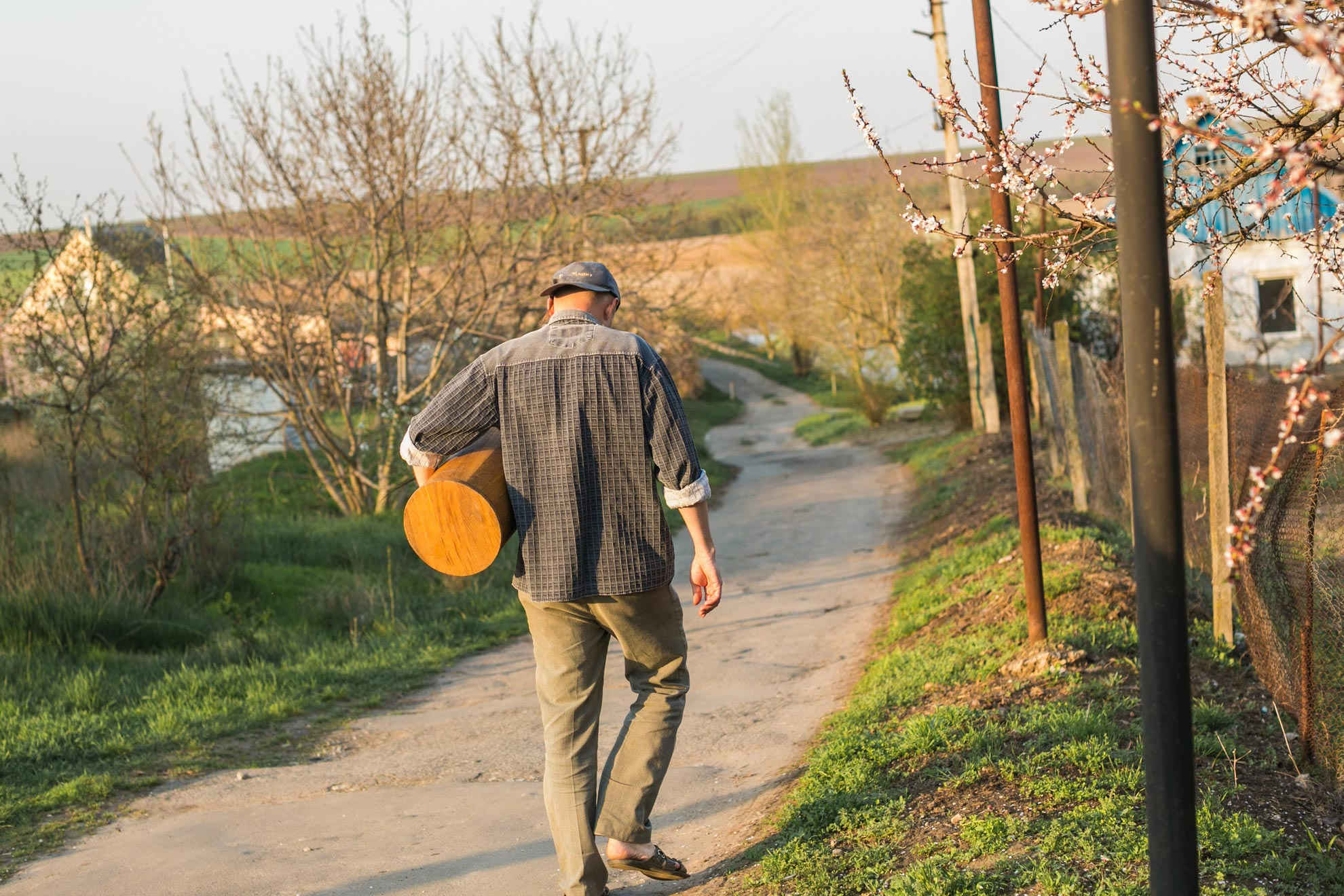
Every order is a challenge for Andrii. First, people usually ask to make a buhai for a certain occasion, which means that the time for production is limited. Second, some customers ask to do what he has never done before:
— They find some buhai on the Internet, such as from some museum exposition. But I have never made it before! For instance, this housing. When I started making it, I was not sure I could complete it. An interesting thing: when I know that someone managed to do it, I think to myself: “I can do it too; I also have brain and hands for it.” The brain is the key, of course. They say: “You have a clever pair of hands”, but that is the brain which matters.

